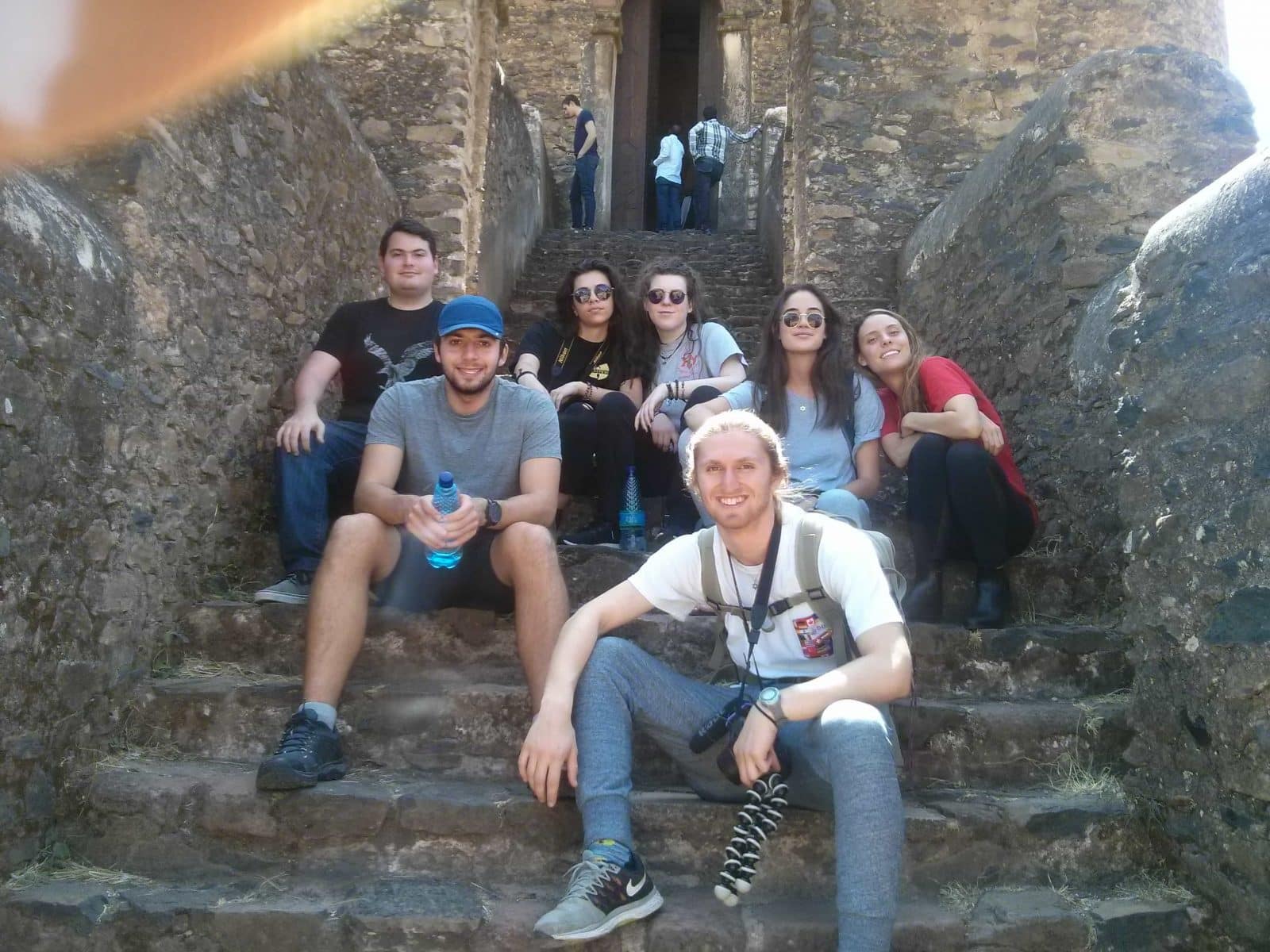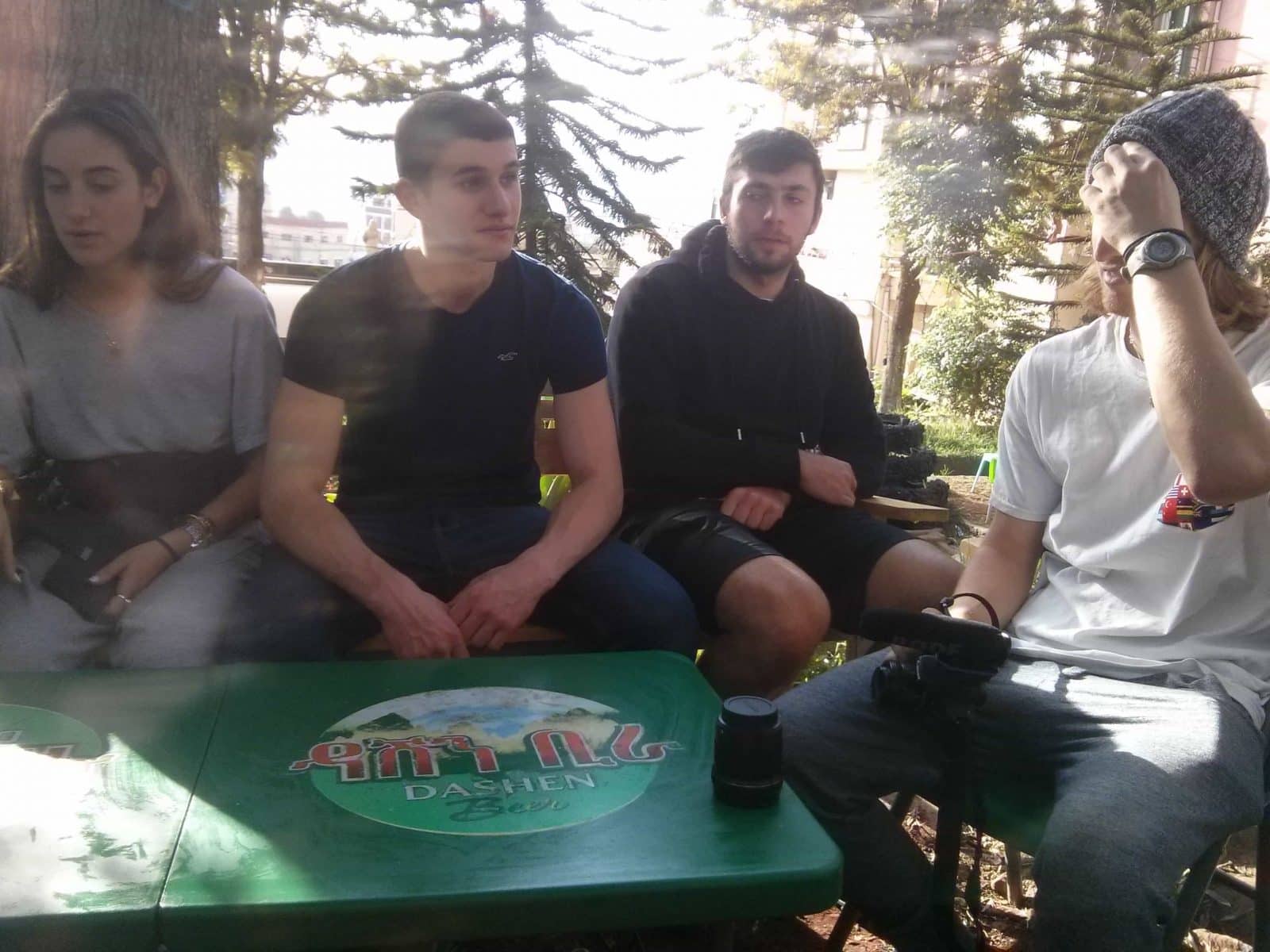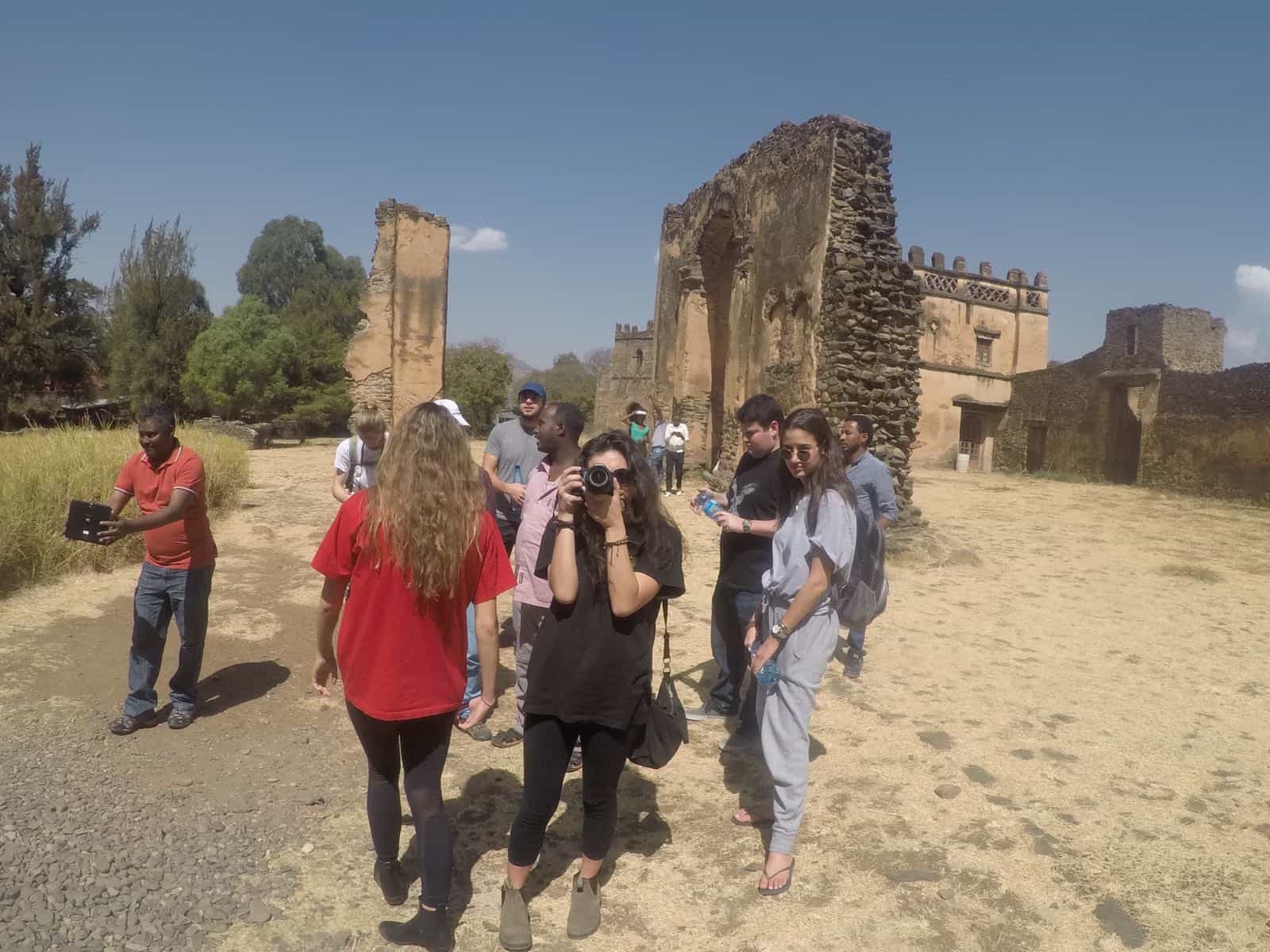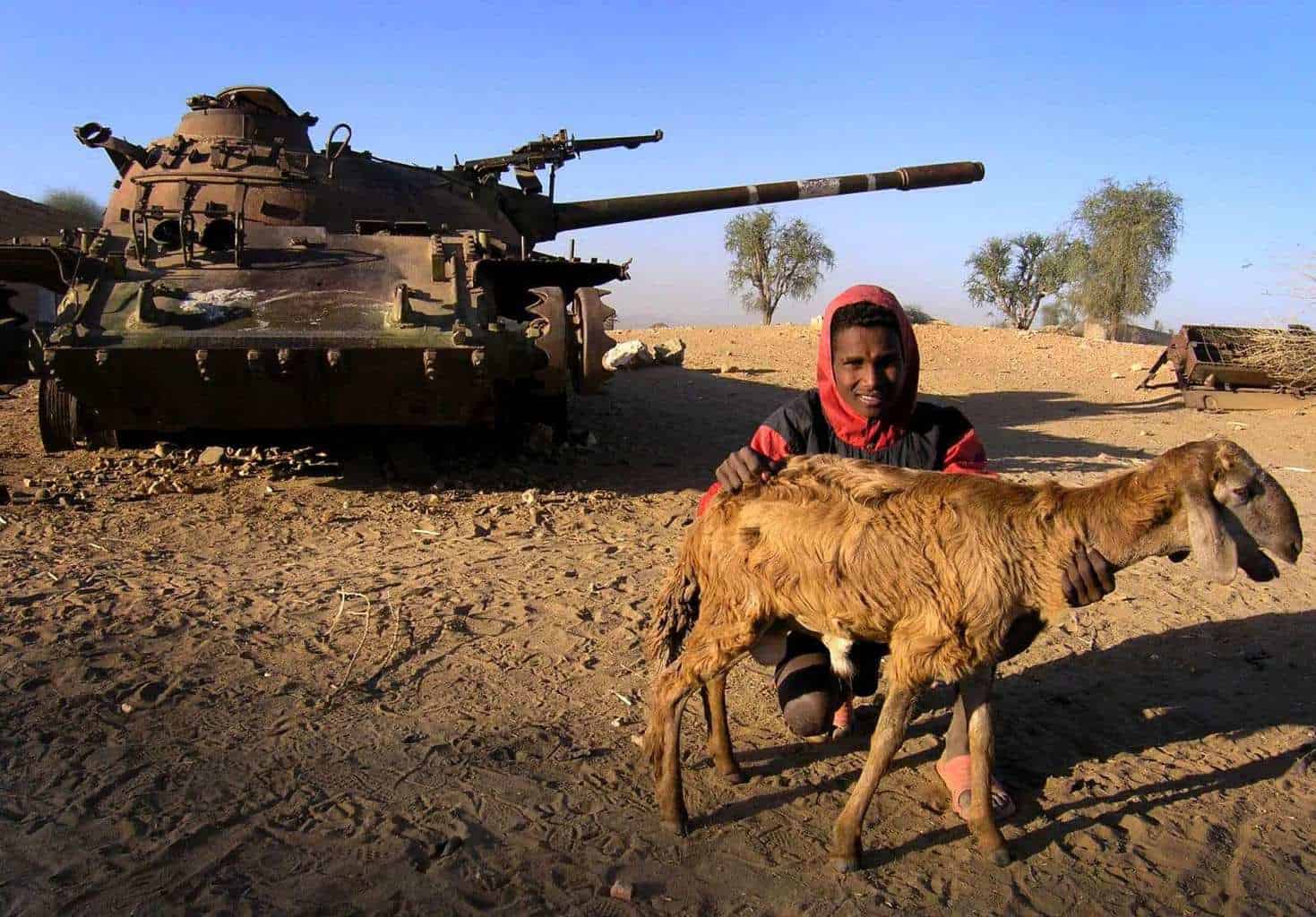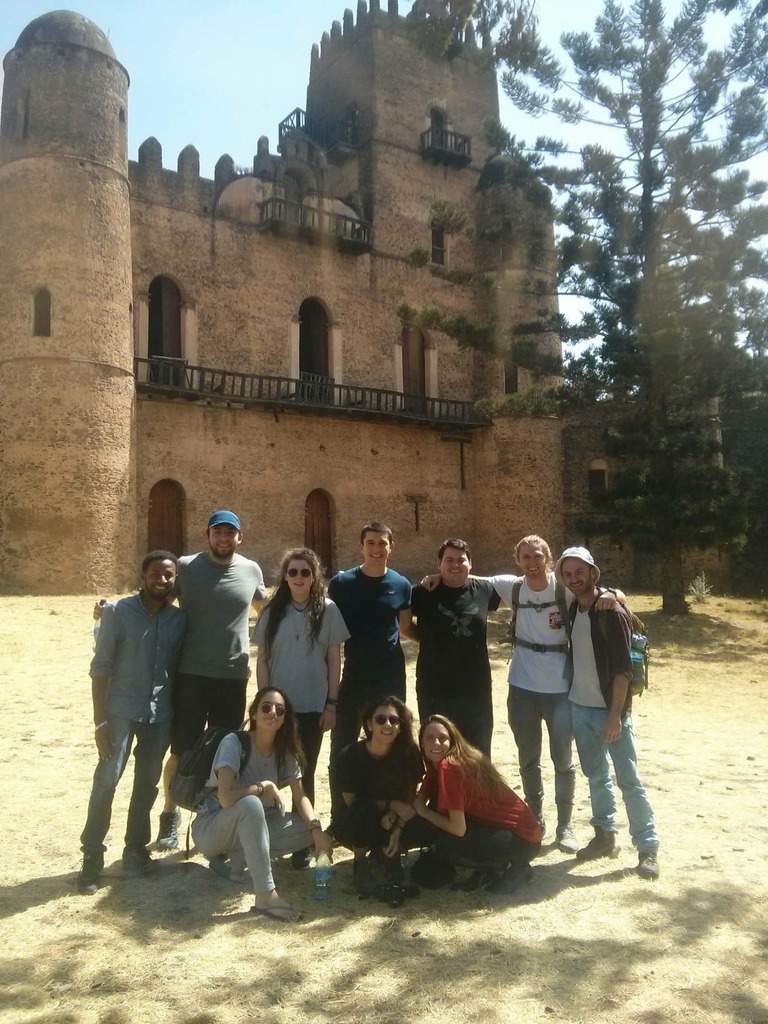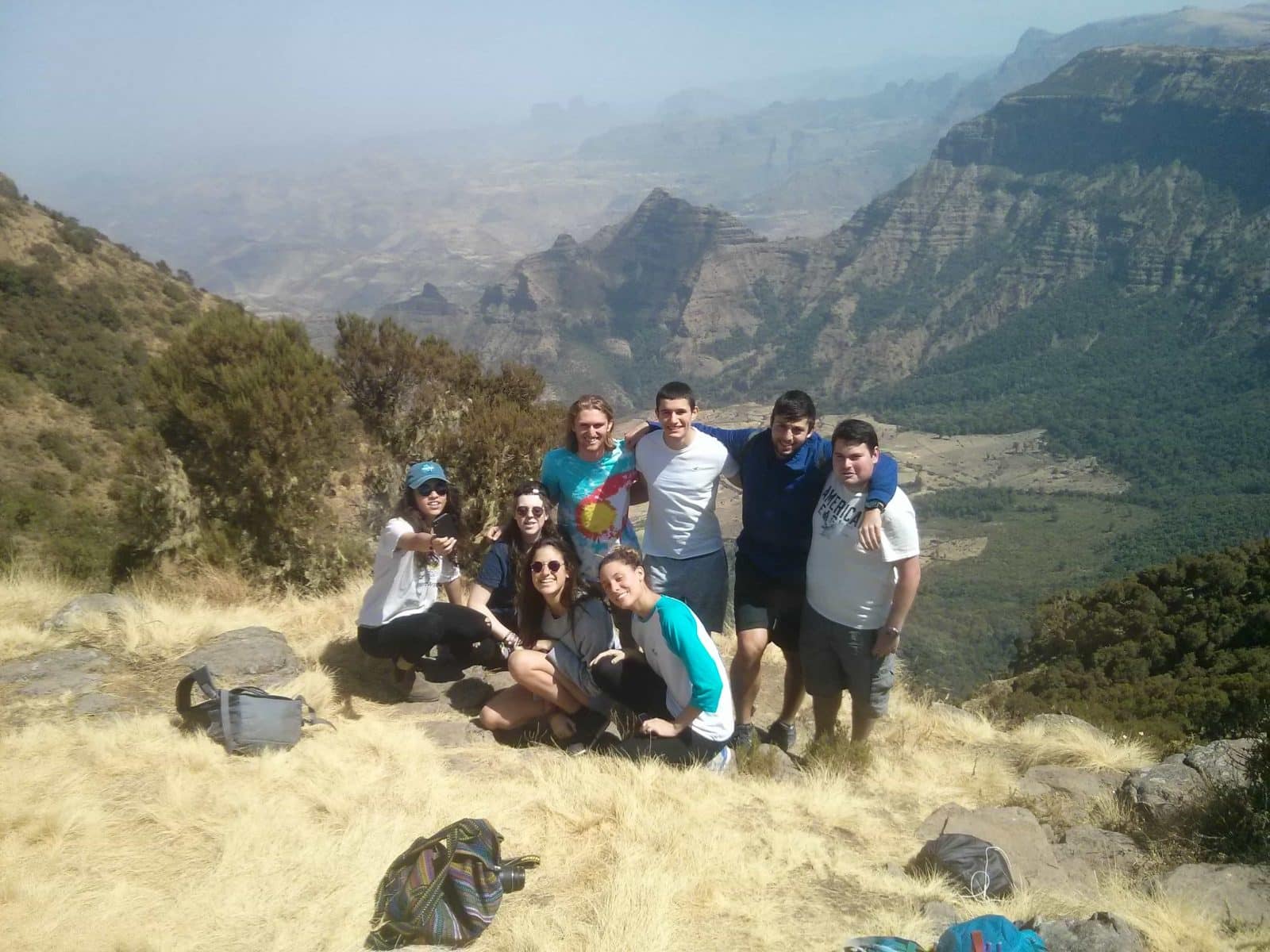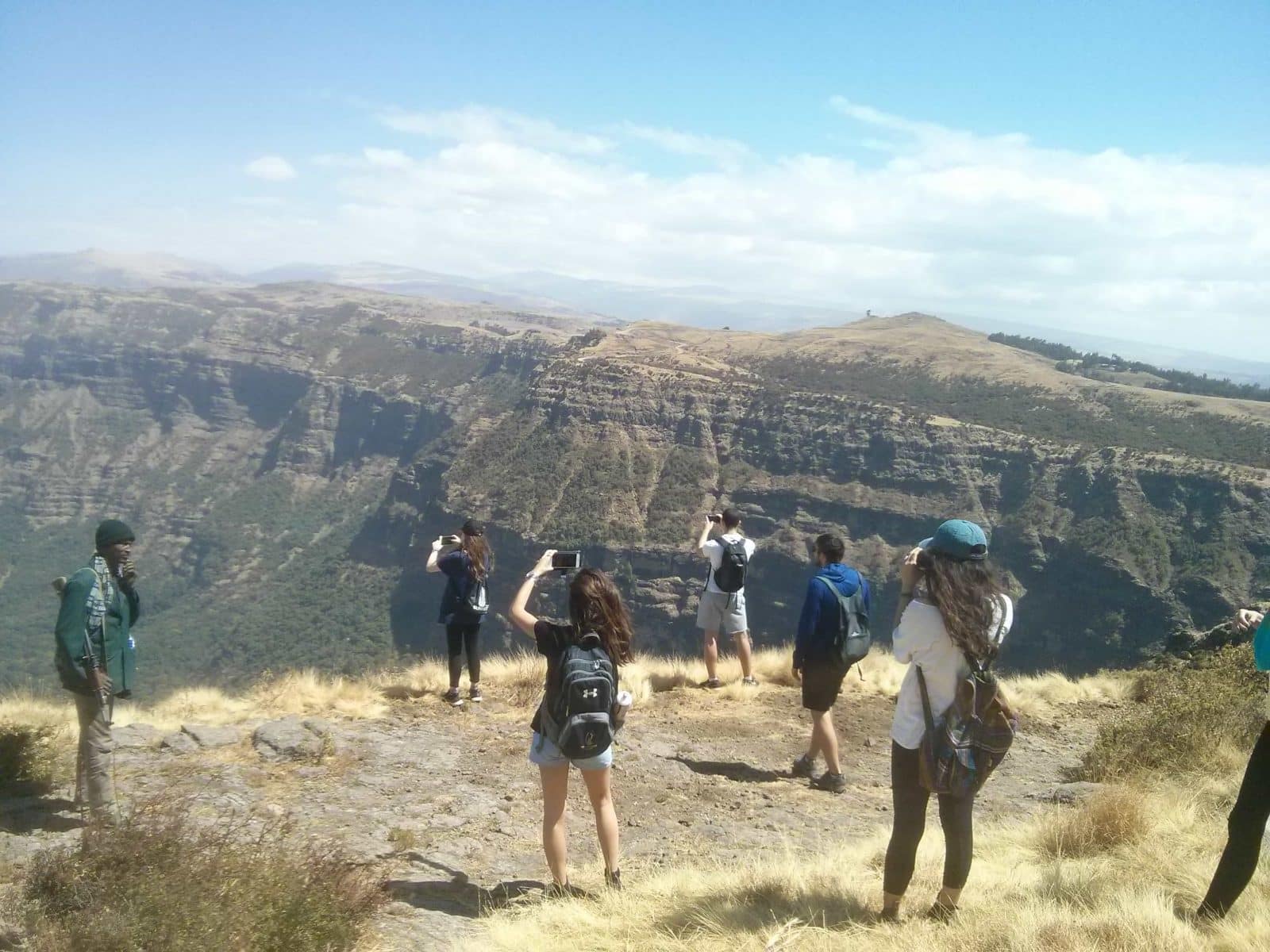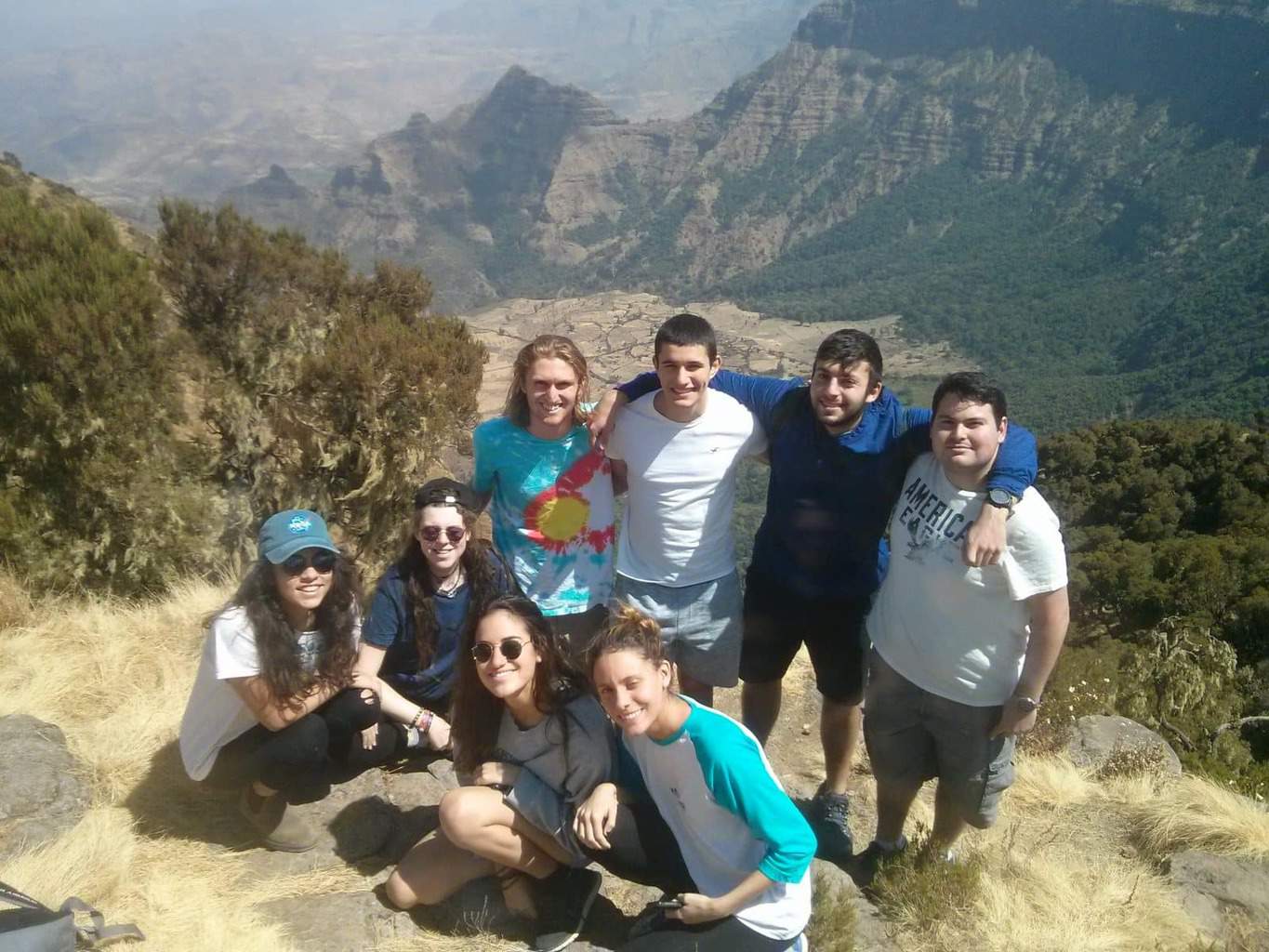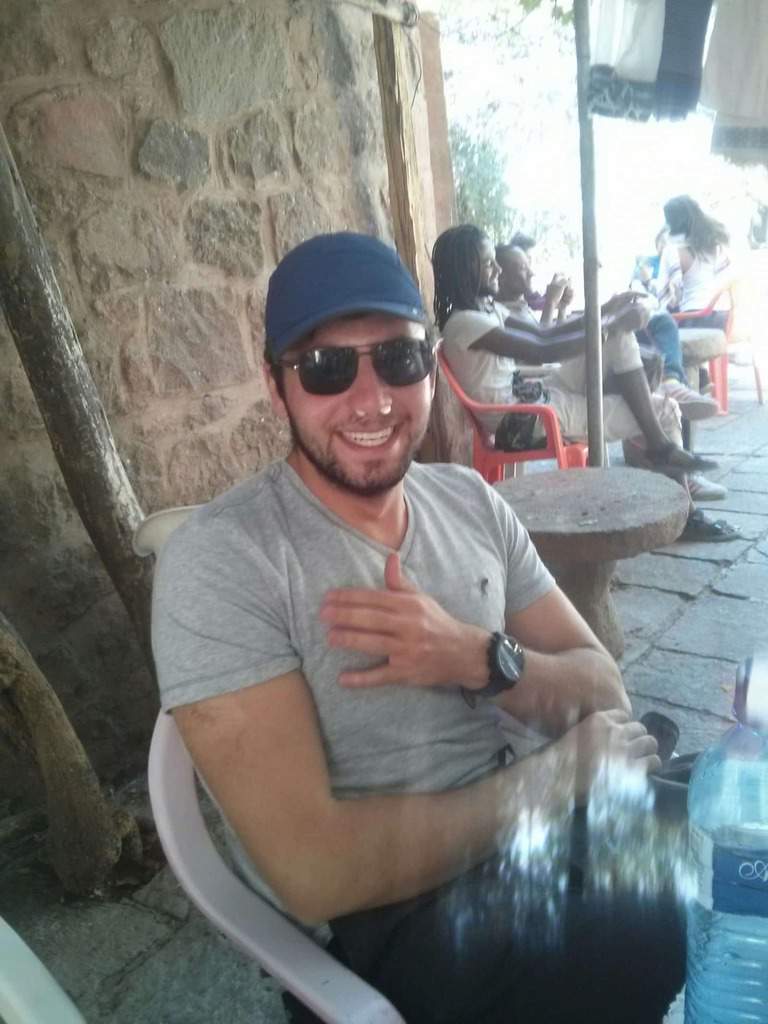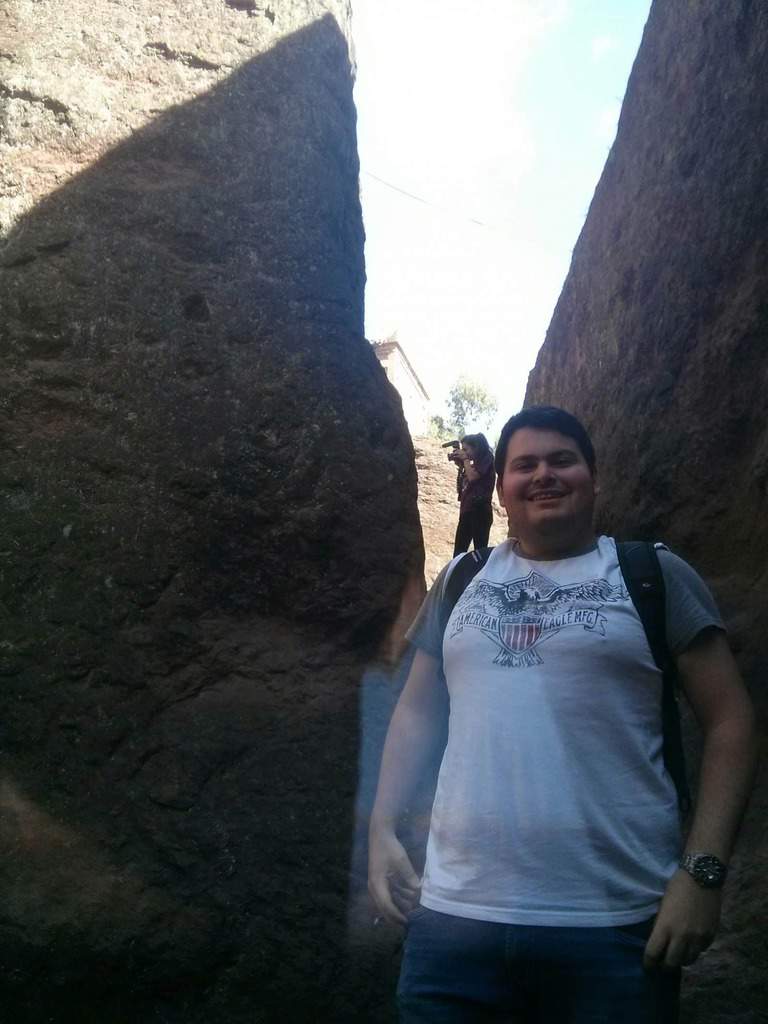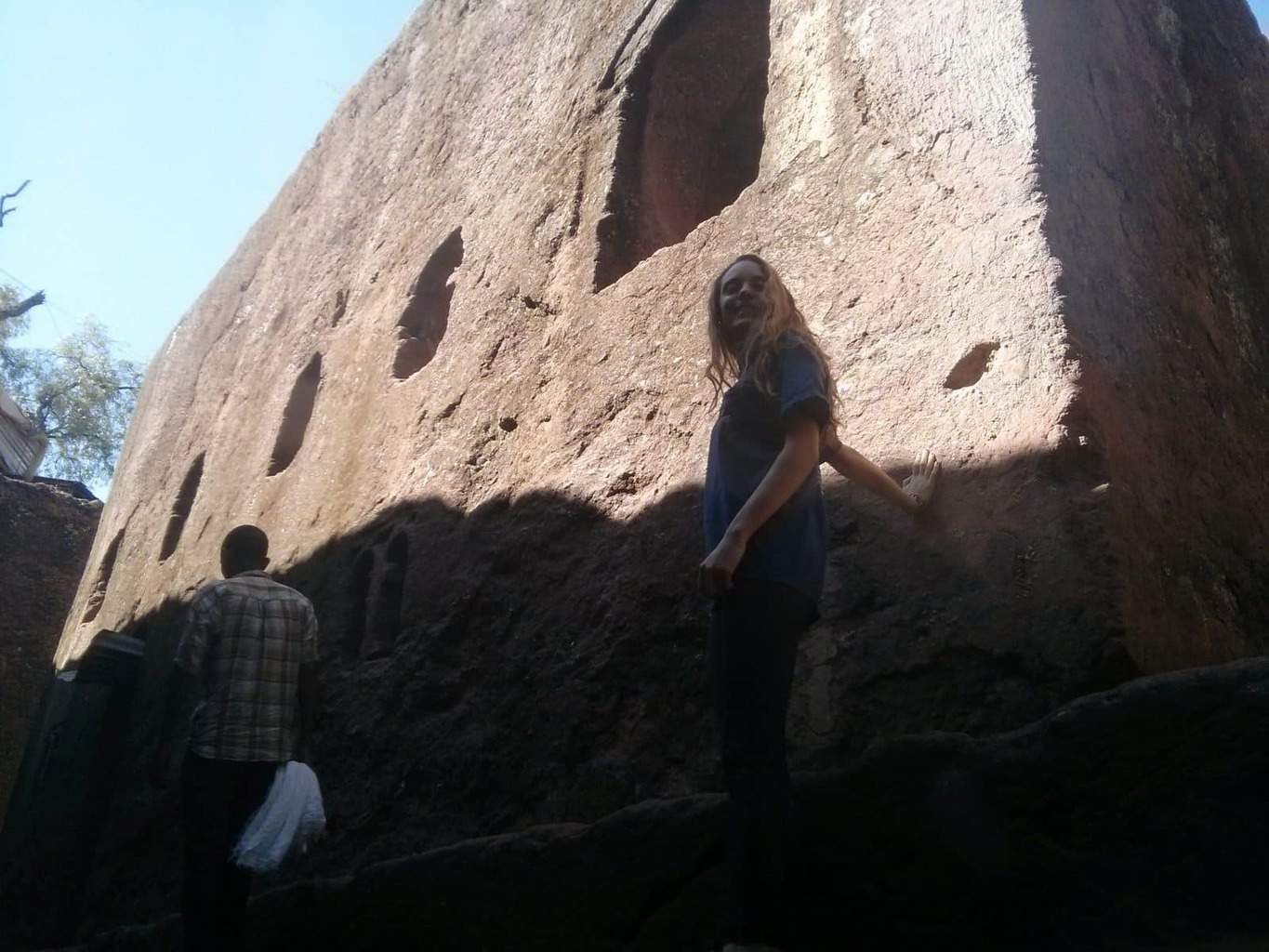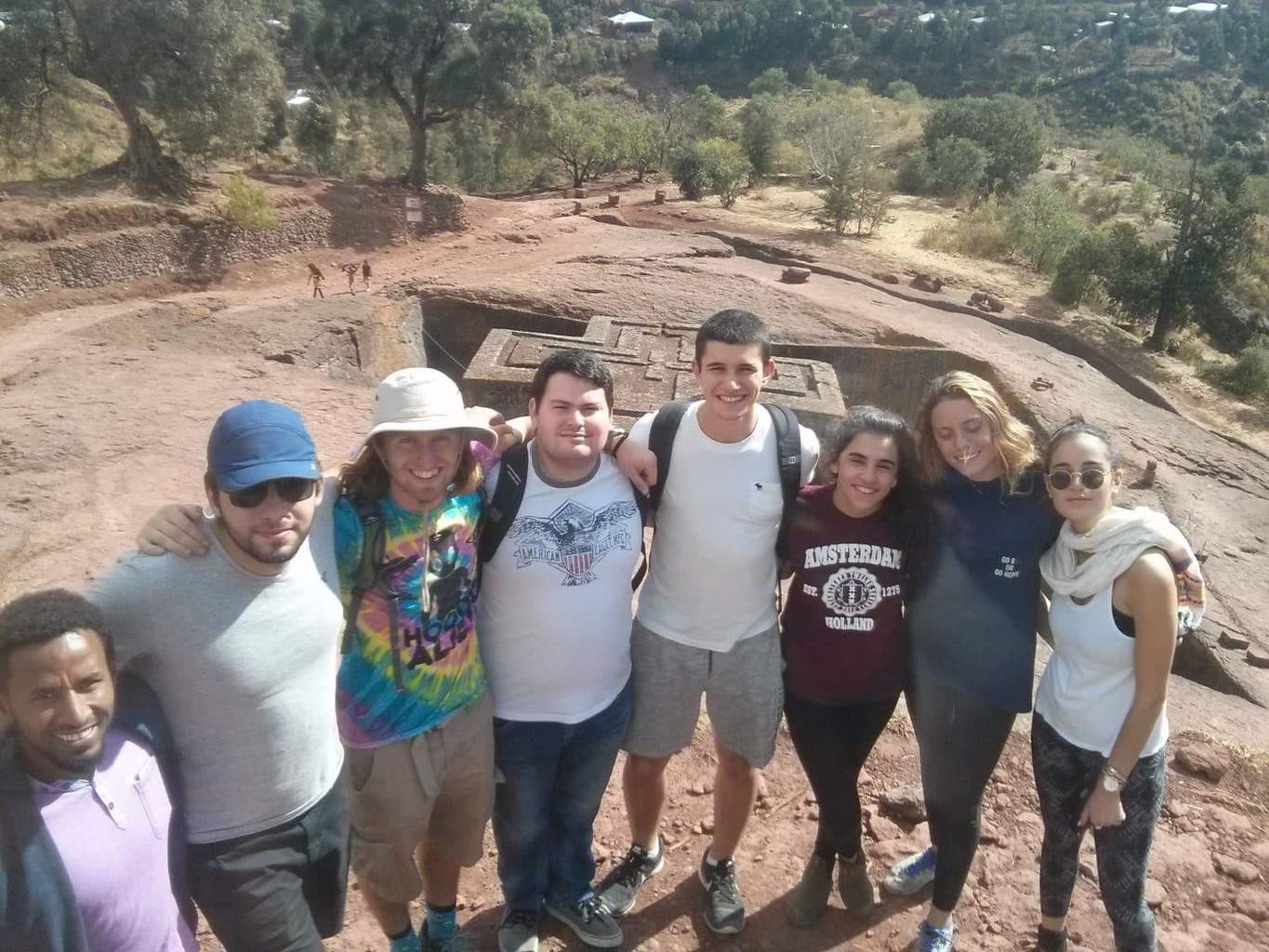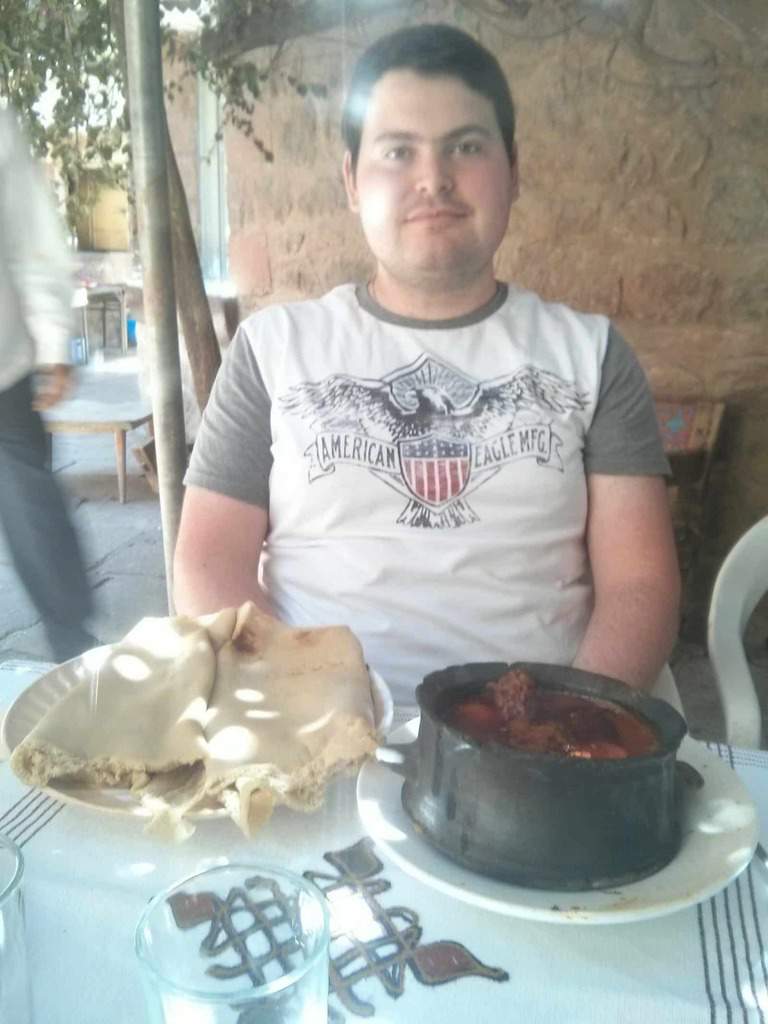Day 1
Shalom parents,
After 2 flights, few hours of waiting in security lines and one missing bag (that came back to us a few hours later – Don’t worry..) I can say that we all arrived safe and sound to Gondar which is an amazing looking city….
Today was a day that will live in the memories of your kids for the rest of their lives. We landed in Gondar, a tiny airport in Northern Gondar, met our guide, driver and Dejene Hodes (graduate of the program and now running heritage tours to Ethiopia) and started our journey. The culture shocks started as soon as we left the airport. Just looking out the window at the mud-huts, tuk-tuks, the way people were dressed, the amount of people walking in the middle of nowhere was an extremely eye-opening experience. We literally seen kids gather with water tanks around a well pulling water out to take to their homes.
We then visited the Royal Enclosure of Gondar, which was the capital city for 200 years and each Emperor built their own castle within the enclosure. We explored the castles, seeing something different in each one and its stunning architecture and once again, there were Magen David’s everywhere (in the Royal Castles). They were pretty spectacular, and some live music on a Masinco (a one string violin).
On the way back from the Royal Enclosure of Gondar to the hotel, one of the streets was blocked. after a few moments, we realized that we were stopped by a massive group of fans of Gonder’s soccer team. Apparently, their team just won one of the most successful soccer team in Ethiopia and they were all celebrating in the streets. It is a sight I’ve never seen in my life. Hundreds of fans dressed in white and red (their team’s color) jumping in circles all together. It seems like we don’t have a lot to do so we just joined them. Jumping and cheering for Gondor’s soccer team. It was a rare experience. Your children were thrilled with the opportunity to jump and social with the local people.
Finally, we had a short break in our fancy hotel (Goha Hotel) which was followed by a traditional evening, which included amazing local food, Gondar dress, music and dancing, more coffee and Tej, a honey wine/beer drink. It was a lot of fun and a few brave souls in our group joined in the dancing. We’re still working on moving our bodies and shoulders the same way as the locals while dancing. It’s surreal and beautiful.
Unfortunately, the wifi is not on my side tonight so hopefully, I’ll be able to send you some pictures from today soon. I have plenty!
Have a great week!
Adi
Day 2
Shalom Parents,
Today started with a long drive to Semien National Park. The drive itself was part of the experience. Everyone was excited at the prospect of being able to sleep on the way up there, but the journey itself was captivating and nearly everyone stayed awake for the majority of the trip. The views were breathtaking and we got to see how Ethiopian agriculture operates. We drove through towns, villages and countryside. Much of the time we were slaloming our way through people, donkeys, cows, sheep, goats and all manner of other obstacles and 1/3 of the journey was on a dirt road.
Eventually, we arrived at the National Park, one of the most spectacular landscapes in the world and listed by the UNESCO as a world heritage site. The Semien chain of mountains is the steepest and most precipitous on the continent and is often compared to the Grand Canyon of Arizona. We had a nature walk along the escarpment with a local guide and took in the breathtaking views and saw some of the wildlife, specifically the gelada monkey. We spent some time watching the monkeys in their natural habitat, which got even more interesting when some fights, and high speed chases, broke out amongst. But don’t worry, they gave no cares that we were around; they were more interested in eating their grass and increasing their population. For some reason, the only member of our group who could go very near to the monkies was Ilan Lewis. In some point, he was so close to one of them he could almost kiss him! Ever since we have called him the monkey king!
We then started the long journey home. The hike at the high altitude (3250 ft about sea level) was quite draining. Although on the way back, we did stop off at a tiny Jewish village (Falashas village) where the children were very impressive salespeople, tugging and pulling at our clothing, holding our hands, asking our names and where we’re from, generally just knowing how to open our wallets for them. It was adorable. The children of the village absolutely loved the shenanigans Ian was doing with them.
Our Jewish experience in Gondar was quite interesting. Not only by the Falasha village we visited today but also for the Jewish center we saw yesterday. The center includes a synagogue, school that also runs by their youth movement Bnei Akiva. The visit was spectacular! The little children were very excited for us as well as the elders. We went inside right in the middle of an activity the madrichim there (14-17 year old – by how they look. They have no idea of what age they are), were doing for the little children (8 – 12 years old). After the activity, they showed us around and then started the prayers. There were well over 80 people at the minyan, at least half of who were women and many were children. To see people with such devotion to the Torah and daven with such Kavanah was a very uplifting experience. The prayer was partly in Amharic and partly in Hebrew and the walls had different handwritten signs in Hebrew like a Bnei Akiva sign telling about the next gathering. It was a very unique experience for all of us.
Wifi is still not cooperating with me so you’ll have to wait a little longer for the pics.
Wishing you an amazing day,
we are sure having a good time,
Adi,
Day 3
Shalom Parents,
Today we left Gondar and flew to Lalibela. It was the shortest flight any of us had ever taken and we landed almost as soon as we took off, though that didn’t stop many of us from sleeping right through it. We left the airport and immediately were met with a dramatic landscape, totally different from Gondar. It was a mountainous and desert landscape that was absolutely stunning. We drove up the mountain to the town of Lalibela and checked into our really nice hotel, where we are staying in which has comfortable rooms with balconies and sweeping views of the valley beneath us. We checked in and immediately left to explore the number 1 site in Ethiopia and it’s very easy to see why it’s the number 1.
Civilization of the past is still alive in the form of strange and beautiful monuments and ruins. The 11th century rock hewn churches of Lalibela reveal a marvelous and skillful architectural knowledge of the past. These incredible edifices remain places of living worship to this day and no one visiting here can fail to be stunned and awed by the remarkable human achievements that the churches represent. There are 11 churches in total and they are all built out of one single rock or mountain and connected with underground tunnels and trenches. We even made our way through one tunnel known as hell without any light whatsoever. We took a million pictures but I am not sure they do the site justice. We also took some pictures with some priests and explored as much of the site as we could in the time allotted. It was extremely impressive. In the middle, we grabbed some lunch and had a long restful lunch break and went back to the churches.
We then headed to a funky restaurant overlooking the gorgeous vast nothingness to watch a stunning sunset where we spent the first part of the evening. The views were incredible, and Ira even time-lapsed the whole sunset on his camera, which was really quite beautiful. While we were watching the sunset on the top of the restaurant we raised our glasses and shared our insights of this trip so far. It is a unique group. Positive and supportive. Then the stars came out and we were surrounded by darkness, except for thousands of stars. It was a very special moment.
Tomorrow we continue to Addis Ababa,.
Thank you for being patient with the pictures. Wifi just isn’t what we’re used to.
All the best,
Adi
Day 4
Shalom Parents,
We flew into Addis Ababa this morning and began to discover the city. Founded in 1886 by Menelik II, Addis Ababa in Amharic means “new flower,” and it is a giant city full of people everywhere you look. It was the closest we have been to civilization since we have been here, but still, 90% of the roads are no more than dirt paths.
After we checked in our stylish hotel (Trinity Hotel) we stepped into our stylish van and headed to the National Museum. Now this place was something special. It was filled with bones, jewelry, and other miscellaneous treasures that have been dug up in excavations sites around the country revealing the rich history of the land. This is even the home of Lucy. If you’re unaware of who Lucy is, or think I’m talking about your friend Lucy who comes over and never stops talking about her current fling with some guy named Mike, then I’m here to give you a little something. I’m full of knowledge now. Lucy is actually known all around the world as the oldest upright walking skeleton on earth; about 3.2 million years old. With hundreds of bones that were found, making up roughly 40% of the total skeleton, we learned that scientists now know that she was able to climb and live in trees, but also walk on two feet like human beings do now. According to our guide, Lucy and the rest of her Homo-Sapience friends were ordinarily from Ethiopia and when the years went by they spread al around the world. After we met Lucy our guide said “Welcome home” as we are all originally from Ethiopia.Interestingly enough however, though she is known as such, and for good reason, there was actually one other skeleton named Salam in the museum that was 3.3 millions years old and believed to have also been able to walk on two legs. Scientists and researchers say that Salam was about 3 years old when he died, and Lucy was roughly 24 years old despite her tiny stature. And its ok considering the whole museum was the size of a large apartment.
Then we went to eat lunch, a short break in the hotel and left to meet Dr. Rick Hodes who operates in Ethiopia for the past 29 years. Dr. Hodes was the doctor for the Jewish Ethiopian community in operation Solomon in 1991 and was the subject of four documentaries. He is also the father of Dejene, our trip coordinator and Aardvark alumni. Dejene was adopted by Rick when he was 12 and was sent to Dallas to get his spinal cord straightened under Rick’s medical insurance. Dejene has 4 more brothers that Dr Hodes adopted in order to treat them under his medical insurance, and other than them there are currently 17 kids that are in need for an operation or medical attention living under Rick’s roof. So naturally, we came with many trays of pizza!
We spent four hours in Rick’s house looking at presentations of the patients he’s treated over the years, including Dejene’s case, and hearing stories about his work. The group did not stop asking questions. One thing that he said was that in medical school you are taught to maintain a certain distance between you and the patient, something he fails to do. During operation Solomon, Dr. Hodes was working on getting patients from the hospitals so that they would be able to get on the plane to Israel on time. He had some amazing stories on how he basically smuggled certain patients so that they could continue their treatment in Israel. All that’s left to do after hearing such a man speak is to take a good look at your life and ask, am I doing enough? Meeting the kids that Dr. Hodes treats also helps to put your life in perspective.
While sitting in Rick;s house for a couple of hours, we totally lost our sense of time… So after, we went quickly (accompanied by Rick and one of his volunteers) to eat dinner in an Italian restaurant. After a good dinner, we all went straight to the hotel, exhausted from a long inspiring day.
We have one more day in Ethiopia day and I’m not sure anybody is ready to leave. It’ll be a tough goodbye…
Have a nice day,
Adi.
Day 5
Shalom parents,
I am happy to inform you that I am writing this from the comfort of Tel Aviv after an incredibly beautiful, humbling, interesting, and amazingly exhausting week. But seeing as you’ve been kept in the loop about our goings-on the first 4 days, I might as well describe our final day in Ethiopia.
Day 5 started with a well-deserve late morning where we met for breakfast at 9am. We headed to a second museum which actually used to be the home of the emperor in the early 1900’s. As we walked through we saw his original bedroom, and bathroom, suits and general wardrobe. It was very all very interesting because, due to the sheer size of the whole building, we also learned a lot about the Ethiopian history and culture through ancient instruments, pottery, tools, folklore and tribal customs.
Then we jetted to the market. As soon as we parked, Dejene explained that pickpocketing is a big thing in that neighborhood of Addis, and to not get too close to any children, and also to bargain for everything. Like Israelis, Ethiopians are insanely good at marking up the value of items for tourists. Everybody seemed to get everything they wanted from the market within an hour, and as one of the students explained, “It is just exhausting getting hassled this whole time.” So we left, content at the items that were purchased.
Anyway, after this big day, we headed for dinner in a very cool dinner theater. The show taking place during our authentic Ethiopian meal had dancers and singers performing locals songs in different styles from around Ethiopia. We recognized the certain Gondarian dance style from the show we had been in on the first day of the trip. I also noticed we all got much better in eating the Ethiopian food with the Ingira bread as well; everyone was getting their hands dirty and trying different foods from each other’s plates like the locals do.
And finally, before I say goodbye, I must say thank you to your children who also took an important role in making this trip amazing!
So… Ahm Ahm
Thank you:
Ricky Studetzki – for making sure that we didn’t leave anyone in Ethiopia (He was responsible for counting everyone after everyone)
Tali Webber – For making sure everyone used a western toilet when they had the chance
Natalie Simons – For reminding everyone what is safe and what isn’t (including what is under the insurance policy and what isn’t)
Molly Cooke – For making the helping us get the decision of “What should we eat this time?!? ”
Jessica Soto – For giving the group all the details for the coming day itinerary.
Uri Zejerman – For being our Spicy indicator – He crazy for spicy and saved us from many uncomfortable situations involving Ethiopian food which was way too much spicy for our fragile tongues.
Ilan Lewis – For getting us the best moments with the monkies – The Monkey King!
And Finally, to our great Documentary guy – Ira Weiss who made amazing Vlogs for this trip (Which will be sent to you any moment now)
I’ve Added the Vlogs of the first 4 days of Ethiopia and will send you the last one soon.
Just Click on the day you want to watch
Day 1 February 5th.
Day 2 February 6th.
Day 3 February 7th.
Day 4 February 8th.
This will be all for now.
Adi.



